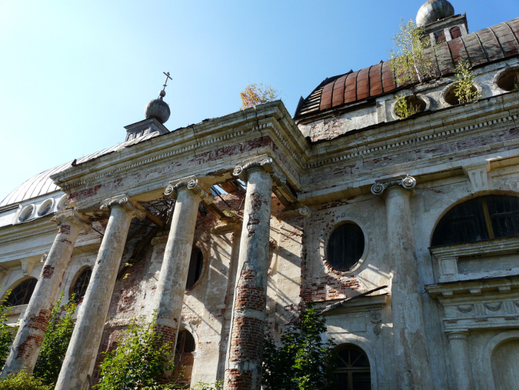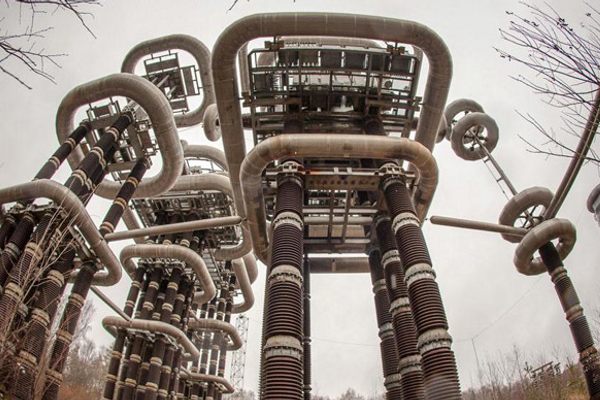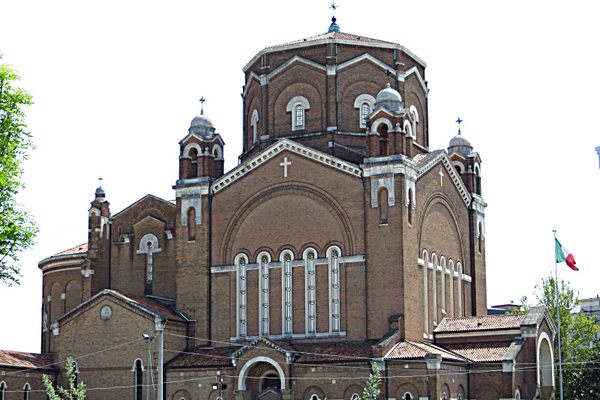The Church of Our Lady of Kazan
An unusual abandoned church damaged in World War II sits in a small village outside Moscow.
Yaropolets is a small village just over 80 miles from Moscow, but the slow, clacking, arduous train journey from the Russian capital amounts to two and a half hours. Its closest town, Volokolamsk, is around 12 years older than Moscow, and in autumn, bags of excess home-harvested apples scatter the quiet, colourful roads between the two, free for the taking.
Moscow’s brisk crowds dissolve into fresh breezes and a sense that individuals all know one another. At various bus stops along the route, babushkas board and greet neighbours and share cabbage pies.
The Church of Our Lady of Kazan was built in the late 18th century as part of the Chernyshev Estate, and the building itself is unusual in that it’s composed of two symmetric sections: apses on both ends are connected by a broad vestibule. Its design was inspired by early classicism and contemporary late-Baroque and Rococo elements.
Long since abandoned, the plasterwork has fallen off, exposing the red brick underneath, and trees and bushes now sprout from the roof. The all-seeing eye over the entrance has earned it the reputation of being a mysterious Masonic temple, though there’s no evidence to suggest that this was ever the case.
One of the church’s crisscrossed Corinthian-style columns lies sprawled across the floor in the western apse, blocking the path to what’s now an empty shell. Rubble and pieces of ceiling are scattered across the blue and white floor tiles, presumably the result of a World War II shell strike. Buckling wooden beams support the roof in place of the useless weathered cylinders. An uncovered hole in the floor likely marks the descent to the crypt.
Know Before You Go
A tall corrugated aluminium fence with a razor-sharp top surrounds the building, and signs banning access are pinned to the front; the church is in a state of imminent collapse and is very dangerous, according to local security. But there is an opening around the back of the building that several people have clearly used despite the warnings.
















Follow us on Twitter to get the latest on the world's hidden wonders.
Like us on Facebook to get the latest on the world's hidden wonders.
Follow us on Twitter Like us on Facebook